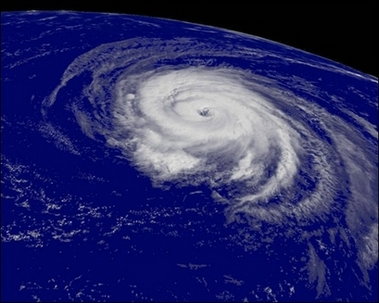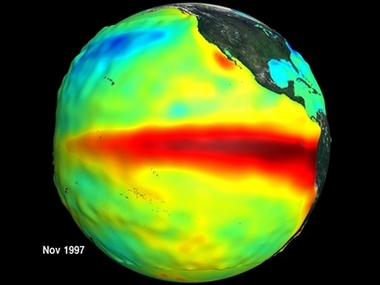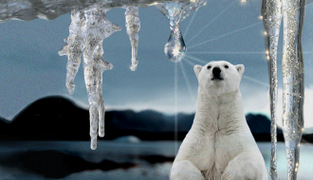Friday, December 29, 2006
Thursday, December 28, 2006
Monday, December 25, 2006
Sunday, December 24, 2006
'Happy Feet' penguins plummet
 Rockhopper penguins are seen in an undated file photo. Numbers of rockhopper penguins have plummeted in recent years, possibly due to climate change, a bird charity said in a warning over the creatures made into stars by the recent blockbuster "Happy Feet."(AFP/File)
Rockhopper penguins are seen in an undated file photo. Numbers of rockhopper penguins have plummeted in recent years, possibly due to climate change, a bird charity said in a warning over the creatures made into stars by the recent blockbuster "Happy Feet."(AFP/File)LONDON (AFP) - Numbers of rockhopper penguins have plummeted in recent years, possibly due to climate change, a bird charity said in a warning over the creatures made into stars by the recent blockbuster "Happy Feet."
Armadillos marching north to Illinois
 An armadillo is photographed looking for food at the St. Marks National Wildlife Refuge in Florida on April 15, 2003. Illinois officials report that armadillos have been killed on the road just about every year since 2003, reflecting what wildlife specialists say is ample evidence that the creatures with the pencil-thin tail are nudging their way northward from their southern U.S. climes. (AP Photo/Illinois Natural History Survey Mammal Collection, Michael Jeffords)
An armadillo is photographed looking for food at the St. Marks National Wildlife Refuge in Florida on April 15, 2003. Illinois officials report that armadillos have been killed on the road just about every year since 2003, reflecting what wildlife specialists say is ample evidence that the creatures with the pencil-thin tail are nudging their way northward from their southern U.S. climes. (AP Photo/Illinois Natural History Survey Mammal Collection, Michael Jeffords)Thursday, December 21, 2006
Invisible Mountains Revealed Under Greenland Ice
As scientists try to gauge the effects of global climate change, they are beginning to look closely at conditions beneath Earth's ice sheets, which cover roughly 15 percent of the planet. That's because, just as the surface ice has morphed over its 2.7 million-year life, the world beneath the ice has likely evolved.
Sunday, December 17, 2006
2006 to be sixth-warmest year on record: U.N. agency
It said 2006 had been marked by extreme drought and heavy flooding in the greater Horn of Africa, record wildfires in the United States, torrential rainfall in the Philippines, shrinking sea ice in the Arctic and the warmest autumn in Europe.
An average temperature of 0.42 degrees Celsius above the annual average from 1961-90 put 2006 on track to be the "sixth warmest year on record," the WMO said in a preliminary report based on data through November. 1998 was the warmest year.
Penguins offer evidence of global warming
Sunday, December 10, 2006
a note from the editor
Greetings followers of this blog.
Normally I do not post commentary to this blog. My emphasis is to let the scientific evidence and news stories speak, make up your own mind.
I wish to solicit aid in bringing more information to this blog. Over 28,000 people have viewed it so far--and my site meter tells me that this is picking up exponentially.
If you see a news story, article, scientific paper or picture you think would fit on this blog please email me the link at christopherscottirwin@yahoo.com
No politics please, and no propaganda. Just flat out new stories about actual events. Video as well.
I started this blog simply to be a news service, a place to compile information about global warming and climate change. I am a news junkie/geek and I thought it would be nice to have a place where I could gather what I saw. I never dreamed so many people would begin reading the blog. Again, if you see any links or info you think belong on this blog email me at christopherscottirwin@yahoo.com
Eventually I would like to add editors who see the idea of this blog so the coverage could be comprehensive. We could even divide up the news services. Thank you.
Normally I do not post commentary to this blog. My emphasis is to let the scientific evidence and news stories speak, make up your own mind.
I wish to solicit aid in bringing more information to this blog. Over 28,000 people have viewed it so far--and my site meter tells me that this is picking up exponentially.
If you see a news story, article, scientific paper or picture you think would fit on this blog please email me the link at christopherscottirwin@yahoo.com
No politics please, and no propaganda. Just flat out new stories about actual events. Video as well.
I started this blog simply to be a news service, a place to compile information about global warming and climate change. I am a news junkie/geek and I thought it would be nice to have a place where I could gather what I saw. I never dreamed so many people would begin reading the blog. Again, if you see any links or info you think belong on this blog email me at christopherscottirwin@yahoo.com
Eventually I would like to add editors who see the idea of this blog so the coverage could be comprehensive. We could even divide up the news services. Thank you.
Venice's St Mark's Square under water with new 'acqua alta'
 A barman poses on a flooded terrace facing San Marco square in October 2006. Venice's historic St Mark's Square was under water as a new episode of "acqua alta" struck the city with the convergence of high tides and a strong sirocco.(AFP/File/Sebastiano Casellati)
A barman poses on a flooded terrace facing San Marco square in October 2006. Venice's historic St Mark's Square was under water as a new episode of "acqua alta" struck the city with the convergence of high tides and a strong sirocco.(AFP/File/Sebastiano Casellati)The highest "acqua alta" of the year occurred on October 24, at 112 centimeters.
Saturday, December 09, 2006
Hurricane threat for 2007 upgraded by scientific team
 National Oceanic and Atmospheric Administration (NOAA) satellite image shows Hurricane Helene churning over the Atlantic Ocean in September 2006. The Tropical Storm Risk (TSR) consortium of scientists have forecast that the Atlantic hurricane season in 2007 will see "a return to high activity".(AFP/NOAA/File)
National Oceanic and Atmospheric Administration (NOAA) satellite image shows Hurricane Helene churning over the Atlantic Ocean in September 2006. The Tropical Storm Risk (TSR) consortium of scientists have forecast that the Atlantic hurricane season in 2007 will see "a return to high activity".(AFP/NOAA/File)Australia sends in troops amid worst bushfires in 70 years
http://www.aus-emaps.com/bushfires.html
Australia has mobilised the army as some of the worst bushfires in 70 years threatened homes and shrouded Victoria state in thick smoke that closed the airport and grounded firefighting aircraft.
The sheer magnitude of the bushfire emergency, not seen since the state's "Black Friday" catastrophe of 1939 which left 71 people dead, prompted the federal government to consider the emergency from a national perspective and offer extra assistance
Australia has mobilised the army as some of the worst bushfires in 70 years threatened homes and shrouded Victoria state in thick smoke that closed the airport and grounded firefighting aircraft.
The sheer magnitude of the bushfire emergency, not seen since the state's "Black Friday" catastrophe of 1939 which left 71 people dead, prompted the federal government to consider the emergency from a national perspective and offer extra assistance
Alps said to be at warmest in centuries
Warmed-up oceans reduce key food link
 In this handout image released Wednesday Dec. 6, 2006 by NASA, the relationship between ocean temperature and ocean biology are shown during the 1997 El Nio events. Ocean plant growth increased from 1997 to 1999 as the climate cooled during one of the strongest El Nio to La Nia transitions on record. Since 1999, the climate has been in a period of warming that has seen the health of ocean plants diminish. The critical base of the ocean food web is shrinking as the world's seas warm, new NASA satellite data shows. And that's got scientists worried about how much food will grow in the future for the world's marine life. (AP Photo/NASA, HO)
In this handout image released Wednesday Dec. 6, 2006 by NASA, the relationship between ocean temperature and ocean biology are shown during the 1997 El Nio events. Ocean plant growth increased from 1997 to 1999 as the climate cooled during one of the strongest El Nio to La Nia transitions on record. Since 1999, the climate has been in a period of warming that has seen the health of ocean plants diminish. The critical base of the ocean food web is shrinking as the world's seas warm, new NASA satellite data shows. And that's got scientists worried about how much food will grow in the future for the world's marine life. (AP Photo/NASA, HO)In a "sneak peak" revealing a grim side effect of future warmer seas, new NASA satellite data find that the vital base of the ocean food web shrinks when the world's seas get hotter.


